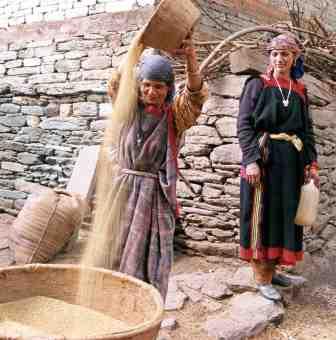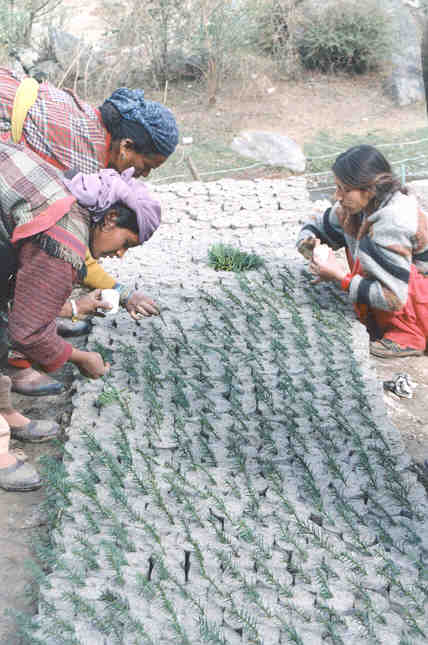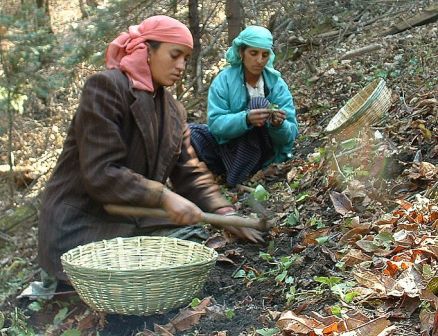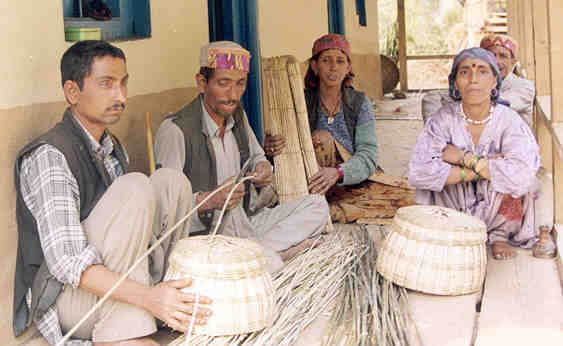Conservation
Hill Society
The region in which GHNP is located has been subjected to outside influence for only four decades. The Park area still remains untouched by the road network, and provides an ideal opportunity for sound conservation efforts. Until the 1960s human pressure on the Sainj-Tirthan area grew very slowly: activities were largely subsistence, with very limited export of natural resources beyond the area. Between villagers and the state, there was increasing intervention in British times, in a more centralized and bureaucratic system. Villagers sometimes accommodated officials, sometimes evaded or even resisted them. This long, independent tradition made it very difficult to shift to today’s principle of participatory management in the area around GHNP.

The Park remains untouched by any road network and thus provides a unique opportunity for sound conservation efforts. Until the 1960s human pressure on the Sainj-Tirthan area grew very slowly. People in the area were primarily living at a subsistence level with very limited export of natural resources beyond the area. More recently, the state government’s commitment to rapid economic and social development of the area put great pressures on the environment. To overcome the Kullu mountain region’s inaccessibility, road and transport infrastructure became a first priority. In the late 1960s, local roads were steadily improved to make automotive traffic possible. These roads enabled regular bus service, allowing villagers from remote areas easy access to major towns for markets and labor. Smaller link road construction continues as part of state government infrastructure development.





The Forest Department’s policies after Independence were consistent with the overall priorities of the Five Year Plans. Their priorities were accelerated timber cutting and contribution to rapid economic growth (rising market production and cash incomes). All the post-independence reconstruction schemes involve industrial expansion, river valley projects, electricity schemes and development of communication all of which lean heavily on forest produce.
In response to environmental criticisms, commercial timber felling was banned statewide in 1978. Thereafter, the Forest Corporation carried out only salvage logging and established more wood depots for local people and fruit packers. The trend of changing priorities was embodied in a new 1980 Himachal Pradesh Forest Policy, which instructed the Forest Department and Corporation to reorient their work toward reforestation and conservation. In line with the changed priorities, the department’s name was changed to the Department of Forest Farming and Conservation.
Grazing Pressures
Early research in GHNP saw domestic grazing as largely destructive of wildlife and
habitats. The first international team of wildlife biologists concluded in 1983,
that grazing had significant impacts on vegetation, had reduced the amount diversity
of shrubs and ground vegetation, and that domestic animals is causing severe alteration
of the natural forest flora. The Himachal Wildlife Project reports research team’s
resurvey in 1992 gave an estimate of 25,000 local sheep and goats in GHNP, plus
10,000 outsiders’ sheep and goats each summer, and recommended that all flocks
be removed from any future GHNP.
More recent research from the Wildlife Institute of India (WII) scientists revealed
that landscapes representing both wide natural variation plus additional human-induced
variation is probably a more advantageous habitat for many birds and smaller species.
For example, WII biologists report that “Thaches seem to be ideal habitat
for insect fauna, particularly butterflies.” Different species prefer short
or tall grass, but excessive grazing reduces number and variety of flowering plants
on which butterflies depend.
Medicinal Herbs and other Non-Timber Forest Products
The second major pressure on GHNP’s biodiversity is the collection of medicinal herbs, as well as other minor forest products, especially morel mushrooms. This is a different issue from grazing rights, for administrators as well as local people, since the British Forest Settlements (e.g. 1880s Anderson onward) placed no restrictions on anyone’s collecting the herbs. Until the 1960s there was no significant commercial market for the major herbs and no one anticipated that this would become a critical issue for the Park.
With commercial pressures several species of herbs have become rapidly depleted
and are endangered including: Karoo (Picrorhiza kurroa), Hathpanja
Dactylorhiza hatagirea, Aconitum heterophyllum, Shingli Mingli Dioscorea deltoidea,
Nardostachys grandiflora, Podophyllum hexandrum, Texus wallichiana are endangered
(EN).


Bamboos are mainly collected by landless Scheduled Castes (type known as ringal). As other cash income sources for unskilled labor, become more available, bamboo craftwork is declining . Pressure on bamboo appears not to have changed much in recent years and pose a serious ecological problem in and around GHNP.


